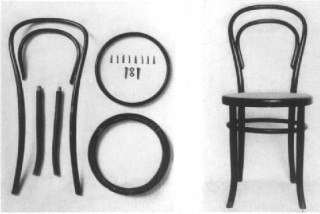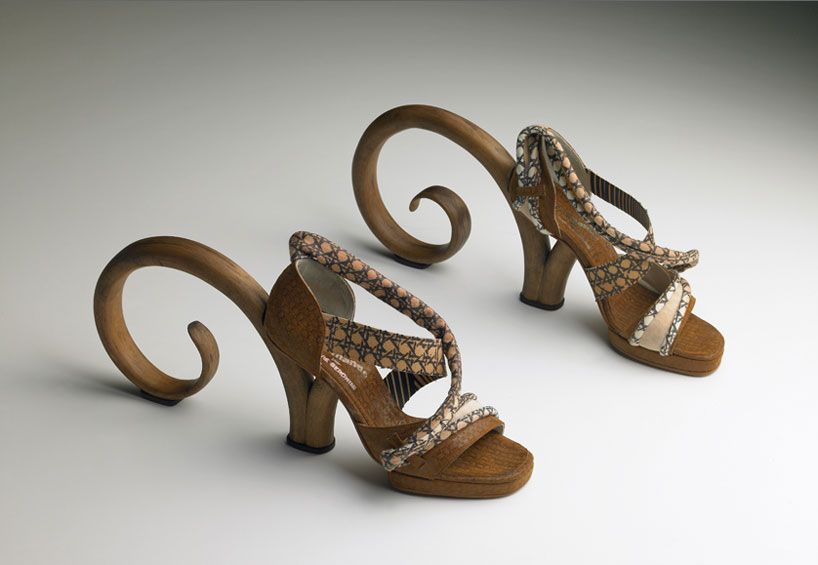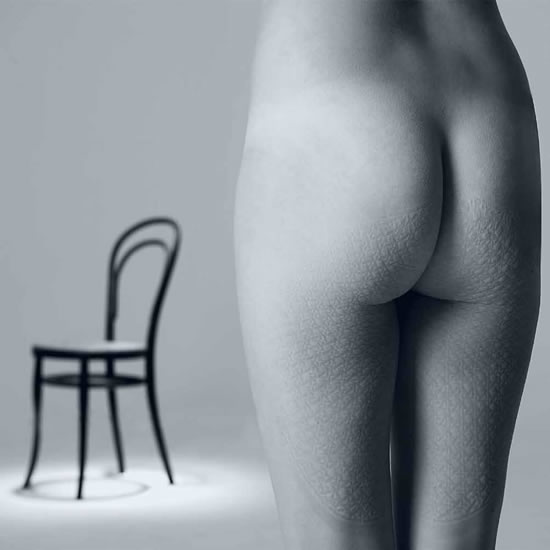 "The Chair of Chairs" is not a title that I'm giving the Thonet chair, but one that it obviously deserves. Austrian designer Michael Thonet dreamed of a curve. The curve he imagined was one that hadn't been previously accomplished with wood, because wood just doesn't like to bend without a little help. Thonet attempted the common method of wood bending in the early 1800's, bent lamination. Bent lamination is the process of gently bending wood to the desired curve, gluing it, and bracing it until it hardness into that shape, and is a technique still popularly used today.
"The Chair of Chairs" is not a title that I'm giving the Thonet chair, but one that it obviously deserves. Austrian designer Michael Thonet dreamed of a curve. The curve he imagined was one that hadn't been previously accomplished with wood, because wood just doesn't like to bend without a little help. Thonet attempted the common method of wood bending in the early 1800's, bent lamination. Bent lamination is the process of gently bending wood to the desired curve, gluing it, and bracing it until it hardness into that shape, and is a technique still popularly used today.When Thonet found no success by laminating the wood he moved on to a method that already existed, yet hadn't been used for furniture before: steam bending. Success! Thonet debuted his chair at a show and the crowd was wowed. Made of soft birch wood, he had made the curve of is dreams, which did not previously exist in wooden furniture. Thonet's chair was also the first to come flat-packed when ordered in the mail, which was hugely exciting and innovative in a time when many things were decadent and large and ornate.
Thonet immediately began producing a line of furniture which became wildly popular. In fact, his "#14 Bistro Chair" became so wildly used and accepted, that Thonet immediately began producing a line of furniture which became wildly popular. In fact, his "#14 Bistro Chair" became so wildly used and accepted, that nowadays when one sees a Thonet or Thonet inspired chair at a cafe or in a household, they don't realize that its special, if they notice it at all. Thonet's line continues to run after his death. http://www.thonet.com/?target=home.

Thonet bought a white birch forest, and set up his factory directly in front of it. The factory contained one of the earliest used assembly lines, and lumber came directly in one side so chairs could come out the other. The Thonet factory assembly lines were not exactly safe, however, and many children were employed there, which lead to frequent injury, and even death. The main safety concern was that of the steam bending. Though the technique was the most successful way to implement Thonet's design, it was still a very challenging process. About 70% of the wood bent successfully, and the other 30% would snap back violently on the person attempting it. These rates are consistent with modern steam bending.

 Thousands of pieces are inspired by the Thonet chair, which revolutionized furniture. Not only furniture pieces are based on the Thonet chair (which is widely knocked off as well as paid homage to) but also a wide collection of art. I wouldn't feel comfortable attempting steam bending at this point, even if I had the means, but I'm very curious about bent lamination, which I believe can be done without purchasing major contraptions (depending how I intend to bend).
Thousands of pieces are inspired by the Thonet chair, which revolutionized furniture. Not only furniture pieces are based on the Thonet chair (which is widely knocked off as well as paid homage to) but also a wide collection of art. I wouldn't feel comfortable attempting steam bending at this point, even if I had the means, but I'm very curious about bent lamination, which I believe can be done without purchasing major contraptions (depending how I intend to bend).






No comments:
Post a Comment